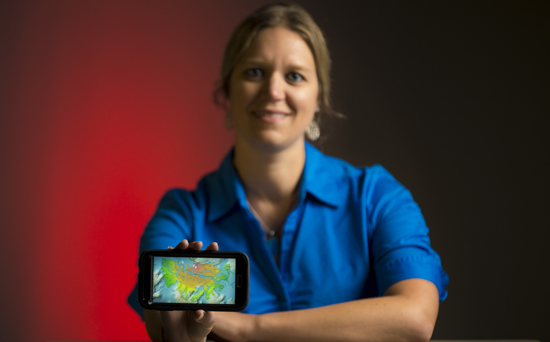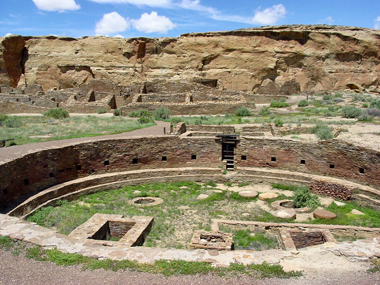Adding Sound to the Ancient Past
 |
|
Kristy Primeau is using GIS technology to explore how people may have heard their surroundings throughout an entire archaeological landscape, or soundscape. (Photo by Carlo de Jesus)
|
ALBANY, N.Y. (September 11, 2017) – From Machu Picchu in the Andes to the Great Wall of China, architectural marvels remain lasting visual legacies of our ancient world. Now University at Albany student Kristy Primeau aims to add sound to the picture, providing a more robust understanding of how these cultures used to live.
“When thinking about archaeological sites, we tend to conceive of them as dead silent – empty ruins left by past cultures,” said Primeau in an article for The Conversation. “But this isn’t how the people who lived in and used these sites would have experienced them. Residents would have heard others speaking and laughing, babies crying, people working, dogs barking and music such as drumming. These sounds could be heard from close by, and perhaps coming from distant locations as well.”
Primeau and her colleague David Witt, a research associate at the University of Buffalo, are involved in acoustic archaeology, or achaeoacoustics. The idea is to consider how sounds would have been heard by people moving through their landscape, providing a more complete picture of their culture.
“Putting sound back into the archaeological landscape is an important part of understanding how people lived, what they valued, how they shaped their identities and experienced the world and their place in it,” said Primeau, a Ph.D. candidate in anthropology at UAlbany and a Registered Professional Archaeologist.
 |
|
Chaco Canyon, New Mexico (courtesy creative commons)
|
She and Witt recently modeled an ancient soundscape in New Mexico’s Chaco Canyon, once home to the Anasazi, or Ancestral Puebloan, people. They began by considering the types of sounds produced by the inhabitants of the great houses, such as the sound of a crowd gathering, an individual shouting a warning call, and conch shell trumpets used in ancient ceremonies. They then developed a spreadsheet to calculate the propagation of sound. The document could then be used to create a linear sound profile by investigating how sound was experienced at a set distance from the source of the sound.
In seeking a three-dimensional tool that looked at sound through a much larger landscape, the researchers combined the calculations performed by their spreadsheet with the functionality of a program called “SPreAD-GIS” – a tool developed to measure the impact of noise on natural environments, such as national forests to create a Soundshed Analysis tool. They then applied the tool to available LiDAR data for Chaco Canyon, which allowed for the researchers to model the propagation of sound at 33 sites within the landscape, including great houses, a great kiva, shrines and stone circles.
“Once the input variables are entered, it takes the Soundshed tool less than 10 minutes to crunch through this complex math for every point on the landscape within two miles of the spot where the sound is produced,” said Primeau. “Our model then creates images that show where and how sound spreads across the landscape. This gives us a way to visualize the sounds people would have experienced as they moved through the landscape, going about their day.”
Their research provides a more complete understanding of the ancestral Puebloan people, and the importance sound may have played in their daily lives. For instance, using the data from the Soundshed tool could help researchers determine if shrines were consistently found in locations where people could hear rituals that were performed at a distance.
Their findings were recently published in the Journal of Archaeological Science: Reports, and reported on by NBC News and Science Daily.
As part of her research into acoustic archaeology, Primeau has just been named the recipient of The Center for Human Evolutionary Studies (CHES) Participation Award from Rutgers University to present her findings at the ‘Frontiers in Archaeological Science’ workshop in late October
![]() For more news, subscribe to UAlbany's RSS headline feeds
For more news, subscribe to UAlbany's RSS headline feeds
A comprehensive public research university, the University at Albany-SUNY offers more than 120 undergraduate majors and minors and 125 master's, doctoral and graduate certificate programs. UAlbany is a leader among all New York State colleges and universities in such diverse fields as atmospheric and environmental sciences, business, education, public health,health sciences, criminal justice, emergency preparedness, engineering and applied sciences, informatics, public administration, social welfare and sociology, taught by an extensive roster of faculty experts. It also offers expanded academic and research opportunities for students through an affiliation with Albany Law School. With a curriculum enhanced by 600 study-abroad opportunities, UAlbany launches great careers.


